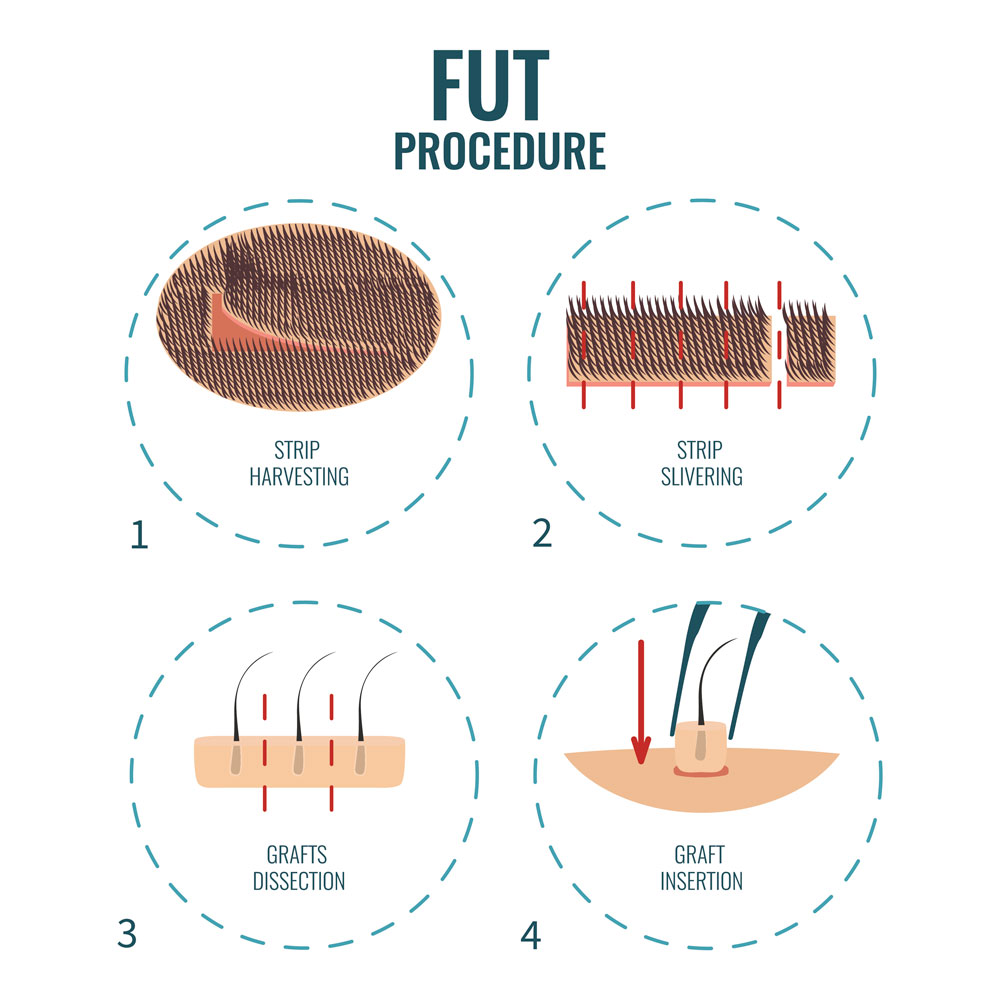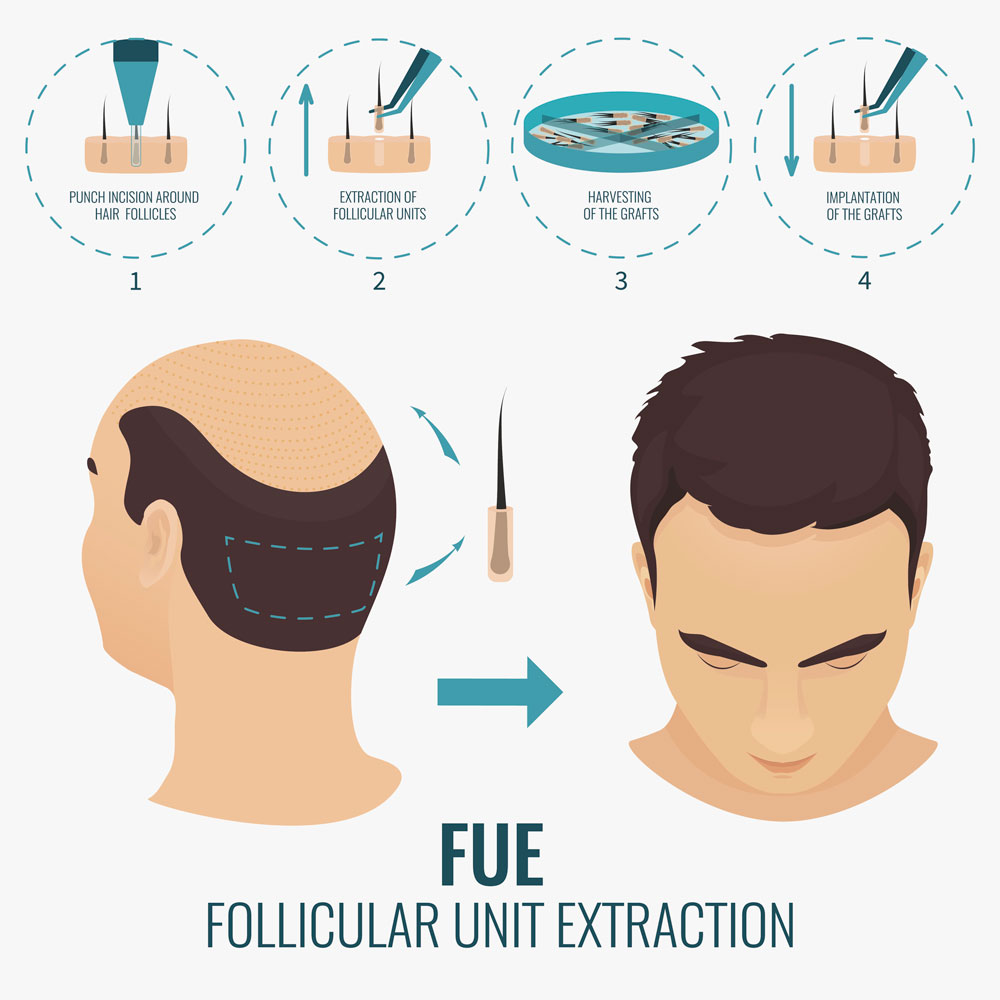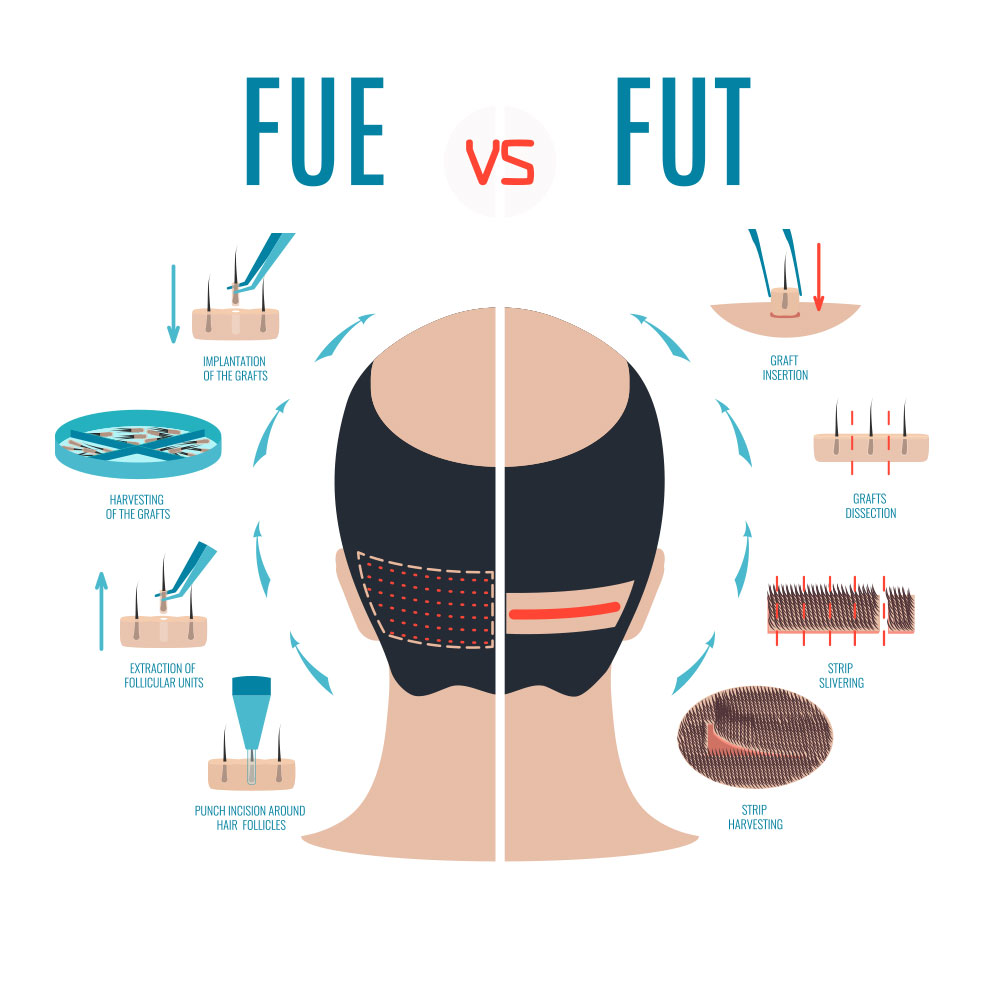Hair Restoration
Dr. Ratushny’s surgical expertise involves performing both of the following modern techniques in hair restoration surgery. Dr. Ratushny tailors the hair transplantation technique to your hair loss goals.
Follicular Unit Transplantation
(FUT/strip excision)
Follicular unit transplantation (also known as a strip excision) is the gold standard type of hair transplantation procedure that moves the greatest number of hairs from the donor site on the back of the head to the recipient sites on the front and top of the scalp. Under local anesthesia, Dr. Ratushny removes a strip of hairs from permanent donor area on the back of the head and then stitches up the edges together in a way that minimizes the linear scar in the area, allowing it to be easily covered by the remaining hairs. Dr. Ratushny’s team of trained technicians then divide the strip into individual follicular units made up from anywhere between 1 to 4 hairs. Dr. Ratushny then creates hundreds of recipient sites in between existing hairs where the donor hairs will be transplanted. Dr. Ratushny and his team use specialized instruments to gently insert each follicular unit into its recipient site, with careful consideration to the angle, orientation, and curl given to each hair that is placed. The body’s clotting factors act as a glue to hold the transplanted hairs in place. Patients who choose this type of hair transplantation will have a donor linear scar on the back of the scalp after the procedure. While this scar is typically very narrow and well concealed by overlying hair, it may be visible if you have a hair style in which you closely shave the back of the head.
Follicular Unit Extraction
(FUE)
Follicular unit extraction (also known as follicular unit excision/FUE) is a type of hair transplantation procedure during which Dr. Ratushny removes individual follicular units (made up of 1 to 4 hairs) from the donor sites in the back of the head. Dr. Ratushny uses the best-in-class WAW FUE System to perform his FUE surgery. Under local anesthesia, Dr. Ratushny creates hundreds of recipient sites (where the hairs will be transplanted to) among the patient’s existing hairs in the frontal hairline and/or the top of the head. Dr. Ratushny and his team use specialized forceps to gently insert each follicular unit into recipient site, with careful consideration to the angle, orientation, and curl given to each hair that is placed. The body’s clotting factors act as a glue to hold the grafts in place. Patients who prefer to wear their hair shaved or cropped very short may prefer to have the FUE procedure to avoid the appearance of a strip scar. Instead of a strip scar, FUE patients may have small inconspicuous white dots where the hair was harvested on the back of the scalp. Dr. Ratushny tries to maximize the cosmetic results on both the front and back of the scalp and is careful in selecting each hair follicle from the donor area in a way that the surrounding hairs can maximally camouflage.
Choosing the type of hair transplant procedure right for you.
Dr. Ratushny offers both follicular unit extraction (FUE) and follicular unit transplantation (FUT/strip excision). During a free consultation with Dr. Ratushny, he will review with you what procedure is the right one for you. However, here are some of the benefits of each procedure:
The strip excision procedure is preferable for most women undergoing hair restoration surgery given that it doesn’t require the back of the head to be shaved in order to harvest the donor hairs.
Patients who typically liked to wear their hair cropped short or shaved may prefer the FUE procedure since it minimizes the appearance of a linear donor scar.
Men who generally wear their hair longer and who prefer not to shave the back of the head for the procedure, may prefer the strip excision. The strip scar is usually easily hidden among the patient’s remaining hair.
Patients who have undergone a prior hair transplant have the option of doing either a strip excision or an FUE, as both types of transplant can be complementary in achieving your hair restoration goals. Dr. Ratushny may decide to surgically remove the prior strip scar during a repeat procedure so that the patient will end up with 1 strip scar instead of 2 if they are undergoing a repeat procedure.
Having trouble choosing whether a strip excision (FUT) or FUE hair transplant is right for you? Read more about the choice between these two types of hair transplants in Dr. Ratushny’s blog.




